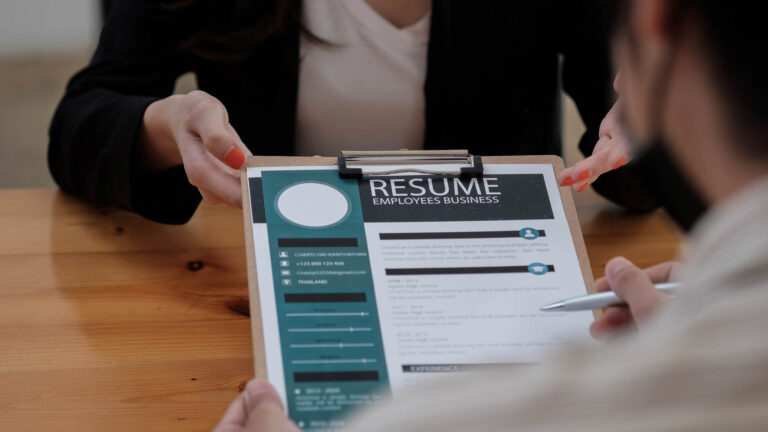Definition of Active Listening
Active Listening is a skill that involves giving one’s full attention to a speaker with the intention to understand what is being said. It involves not only hearing the words being spoken but also paying attention to nonverbal cues, emotions, and body language.
Importance of Active Listening
Active Listening is an essential skill in communication that helps build better relationships, improve problem-solving, and create a better understanding of others. It is a powerful tool that can help foster trust, empathy, respect, and collaboration.
Benefits of Active Listening
Active listening may seem like a basic skill, but it is actually critical in both personal and professional settings. Here are some of the benefits of active listening:
A. Positive Impacts on Relationships
When we actively listen to someone, it shows that we value and respect them. This can help build stronger relationships with family, friends, and coworkers. It can also lead to better conflict resolution, as active listening allows us to understand the root of the problem and work towards a solution.
Additionally, active listening can help us avoid misunderstandings and miscommunications. By truly hearing what someone has to say, we can ensure that we are responding appropriately and not making assumptions. This can prevent hurt feelings and damaged relationships.


B. Enhancing Professional Performance
Active listening is a crucial skill in many professional settings. When we listen actively to our colleagues, clients, and customers, we can better understand their needs and goals. This allows us to provide better solutions and improve our performance.
Active listening can also help us avoid mistakes and misunderstandings in the workplace. When we listen carefully to instructions and feedback, we can ensure that we are meeting expectations and delivering quality work.
C. Better Communication and Collaboration
In any setting, active listening can lead to better communication and collaboration. When we actively listen to others, we can understand their perspectives and ideas. This can lead to more creative problem-solving and innovative solutions.
Active listening can also help us build trust and respect in our professional relationships. When we listen attentively to our colleagues and coworkers, they feel heard and valued. This can foster a more positive work environment and lead to better collaboration.
Active listening is a critical skill for anyone looking to improve their personal or professional relationships. By listening attentively and responding thoughtfully, we can build stronger connections and achieve greater success.
The Science of Active Listening
Active listening goes beyond simply hearing what someone is saying. It is a skill that requires attention, focus, and an understanding of the person speaking. The science behind active listening involves aspects of both neurology and psychology.
A. Neurology behind Active Listening
Neurologically speaking, active listening involves various parts of the brain working together to process and understand what is being said. The auditory cortex is responsible for receiving and processing the sounds of speech, while the prefrontal cortex is involved in interpreting and making sense of the information. The limbic system, which includes the amygdala and hippocampus, also plays a role in active listening. These areas are involved in processing emotions and memory, allowing listeners to understand the speaker’s emotions and remember important details.
B. Psychology of Active Listening
From a psychological perspective, active listening involves several key components. One component is empathy, or the ability to understand and share the feelings of another person. Empathy allows the listener to connect with the speaker on an emotional level and to understand their perspective. Another component is nonjudgmental listening, which involves suspending judgment and avoiding assumptions about the speaker or their message. This allows the listener to hear what the speaker is saying without bias or preconceived notions.
C. Research and Studies
Research has shown that active listening can have numerous benefits in both personal and professional life. In one study, participants who received a high level of active listening during a therapy session reported greater improvement in their symptoms compared to those who received less active listening. In another study, active listening was found to be a key component of effective communication in the workplace, leading to improved relationships and job satisfaction.
In addition, studies have shown that active listening can help improve memory and retention of information. This is because actively listening involves more than just hearing; it requires actively engaging with the information and processing it in a deeper way.
The science behind active listening highlights the importance of actively engaging with others and striving to understand their perspective. By doing so, we can improve our relationships, communication skills, and overall understanding of the world around us.
Seven Essential Active Listening Skills
Active listening is a crucial skill that enables us to better understand and communicate with others. In this section, we will cover the seven essential active listening skills.


A. Paying Attention
Paying attention is the foundation of active listening. It involves being present in the moment, setting aside distractions, and focusing on what the speaker is saying. Nonverbal cues, such as eye contact and body language, are essential to showing the speaker that you are actively engaged in the conversation.
B. Withholding Judgement
It’s natural for us to form opinions and judgments, but active listeners know it’s essential to withhold judgment when engaged in a conversation. By avoiding assumptions and biases, we can ensure we are fully listening and understanding the speaker’s perspective.
C. Reflecting and Paraphrasing
Reflecting and paraphrasing are active listening skills that involve reiterating what the speaker has said. It helps to confirm your understanding of the message and shows the speaker that you are listening attentively. Paraphrasing, which involves rephrasing the speaker’s message in your own words, is an effective way to ensure you grasp the meaning accurately.
D. Summarizing
Summarizing means providing an overview of the conversation. Once the speaker has finished talking, summarizing helps to confirm your understanding of the message and shows that you are following along with the conversation. It’s also an excellent way to provide feedback to the speaker, ensuring they feel understood.
E. Clarifying
Clarifying involves asking questions to gain a better understanding of the speaker’s message. Asking open-ended questions to seek clarification can help fill gaps in your understanding and provide the speaker with an opportunity to elaborate further.
F. Empathizing
Empathizing means putting yourself in the speaker’s shoes and recognizing their perspective. It involves acknowledging the speaker’s feelings and showing genuine concern for their well-being. This skill helps build rapport, trust, and understanding between individuals.
G. Asking Questions
Asking questions is an essential active listening skill that helps to facilitate conversations. Open-ended questions provide the speaker with the opportunity to share more information, while close-ended questions can help clarify specific details. Asking thoughtful questions shows the speaker that you are fully engaged in the conversation and interested in understanding their perspective.
Active listening is an essential skill that enables meaningful communication and builds stronger relationships. Developing these seven essential active listening skills – paying attention, withholding judgment, reflecting and paraphrasing, summarizing, clarifying, empathizing, and asking questions – can help you become a better listener and more effective communicator.
Active Listening Techniques
Effective communication is rooted in listening. Active listening requires the listener to not just hear what the speaker says but also comprehend and understand the underlying message.
The following are some active listening techniques, which when applied, can lead to better comprehension and stronger communication.
A. Mirroring
Mirroring or reflection is when the listener repeats or paraphrases the message conveyed by the speaker. This technique benefits both the speaker and the listener as it helps them synchronize their understanding of the message. It reinforces the speaker’s message while also providing an opportunity for clarification if needed.
Mirroring is especially beneficial when dealing with complex issues or when there is a language barrier. By repeating or paraphrasing, the listener can ensure that they have correctly understood the message and can now communicate their interpretation to the speaker.
B. Validation
Validation is the act of acknowledging the speaker’s thoughts, feelings, and experiences. It can be as simple as saying “I understand” or “That sounds difficult.” Validation helps the speaker feel heard and supported, which is essential in building trust and rapport.
Validation is also vital when dealing with intense emotions. Validating the speaker’s feelings can de-escalate the situation and allow for further discussion.
C. Surface and Deep Level Listening
Surface level listening is when the listener only focuses on the surface-level content of what the speaker is saying. They do not take into account the tone, body language, or emotional subtext. Surface level listening is useful in situations where the content is straightforward, and the speaker is not conveying complex emotions or ideas.
Deep level listening, on the other hand, takes into account all aspects of the communication. The listener pays attention to what is being said, how it is being said, and the underlying emotions and thoughts. Deep level listening is essential when dealing with sensitive or complex topics that require a high level of empathy and understanding.
D. Active and Passive Listening
Active listening is when the listener actively participates in the conversation. They ask questions, provide feedback, and offer solutions. Active listening is useful in situations where the speaker needs guidance or support.
Passive listening, on the other hand, is when the listener is merely present in the conversation. They may be physically present, but they are not fully engaged in the conversation. Passive listening is useful in situations where the speaker just needs someone to listen to them.
E. Attentive and Non-Attentive Listening
Attentive listening is when the listener is fully present and focused on the conversation. They pay attention to the speaker and give their full concentration. Attentive listening is a crucial skill in building relationships and fostering trust.
Non-attentive listening, on the other hand, is when the listener is not fully present in the conversation. They may be distracted or preoccupied with other thoughts or tasks. Non-attentive listening can affect the quality of communication and hinder understanding.
Barriers to Active Listening
Active listening is a critical communication skill that requires concentration and attention to detail. However, there may be barriers that impede our ability to listen actively. In this section, we will discuss the external and internal barriers to active listening and ways to overcome them.
A. External and Internal Barriers
External barriers to active listening are factors outside of you that impede your ability to listen actively. Some examples of external barriers include noise, distractions, a lack of privacy, and competing priorities. Internal barriers, on the other hand, are factors within you that prevent you from listening actively. These could include an emotional state that makes it hard to concentrate, personal biases, or assumptions.
B. Ways to Overcome Barriers
Overcoming external and internal barriers to active listening requires effort, discipline, and awareness. Here are some ways to overcome barriers to active listening.
Be Present
One of the most important things you can do to overcome external and internal barriers to active listening is to be present in the moment. When you’re listening to someone, make a conscious effort to focus on them entirely. Put aside external stimuli, silence your internal dialogue, and stay focused on what the other person is saying.
Keep an Open Mind
Another crucial aspect of overcoming barriers to active listening is to approach the conversation with an open mind. Be aware of your biases and assumptions and make a conscious effort to put them aside. Be willing to accept new information and insights that others may offer.
Pause and Reflect
Sometimes we feel so caught up in the moment that we may miss or misunderstand what others are saying. It’s essential to pause, reflect, and clarify what the other person is saying. Rephrase or summarize what you heard to ensure you understood correctly. This will help prevent misunderstandings and false assumptions.
Practice Empathy
Active listening necessitates empathy. Listen to the other person, try to understand how they’re feeling, and show that you care. Try to put yourself in their shoes and see the situation from their perspective. Doing so will help you understand their needs and point of view, which will, in turn, enhance your communication.
Avoid Multitasking
Finally, avoid multitasking while listening actively. It helps to listen with your entire body, which means looking attentively and making appropriate nonverbal gestures. Avoid the temptation to check your phone or engage in other tasks while listening actively. This will help you stay present and engaged with the conversation.
Developing Active Listening Skills
Active listening is a skill that requires practice and continuous improvement. Below are three ways to develop and enhance active listening skills:
A. Practice Listening
One of the easiest ways to develop active listening skills is to practice listening intentionally. This means being fully present and engaged in the conversation, focusing on what the speaker is saying, avoiding distractions, and providing feedback. Some techniques include paraphrasing, summarizing, and asking relevant questions to demonstrate that you are paying attention.
It’s important to note that active listening requires empathy, openness, and a genuine desire to understand the speaker’s perspective. By practicing these skills regularly, you can improve your ability to listen actively and build strong relationships with others.
B. Attend Active Listening Workshops and Trainings
Another way to develop active listening skills is to attend workshops and trainings that are designed to enhance this skill. Many organizations offer training programs that teach participants how to listen actively, provide feedback, and respond effectively. These trainings often include activities such as role-playing, case studies, and simulations.
In addition, attending events where you can practice active listening, such as networking events or group discussions, can provide valuable experience and help you refine your skills.
C. Solicit Feedback and Regular Evaluation
Finally, it’s important to solicit feedback and regularly evaluate your active listening skills. Feedback from colleagues or supervisors can help you identify areas for improvement and provide insight into how others perceive your listening skills.
To actively evaluate your skills, consider setting goals for yourself and monitoring your progress. This could include tracking the amount of time you spend engaged in conversations, reflecting on the effectiveness of your feedback, or seeking feedback directly from those you communicate with.
By seeking feedback and regularly evaluating your active listening skills, you can continuously improve and develop stronger relationships with others.
Developing active listening skills is a key component of effective communication. By practicing intentionally, attending trainings, and soliciting feedback, you can enhance your ability to listen actively and build stronger relationships with others.
Using Active Listening in Specific Situations
Active listening is a crucial skill that can be applied in various situations, from personal relationships to professional environments and educational settings. Here are some examples of how to use active listening in specific situations:
A. Personal Relationships
Active listening in personal relationships involves giving your full attention to the other person and trying to understand their perspective. It helps build trust and strengthens the bond between individuals. Here are some tips on how to apply active listening in personal relationships:
-
Pay attention: Make sure you are fully present when someone is talking to you. Avoid distractions such as phones or other devices.
-
Empathize: Try to put yourself in the other person’s shoes and understand how they feel. Acknowledge their emotions and show that you care about their well-being.
-
Avoid interrupting: Let the other person finish speaking before you respond. Interrupting can make the other person feel unheard and undervalued.
-
Ask questions: Clarify what the other person is saying by asking questions. This shows that you are interested in what they are saying and want to understand them better.
B. Professional Environment
Active listening is a valuable skill in the professional environment, whether in meetings or during conversations with colleagues or clients. Here are some tips on how to apply active listening in a professional setting:
-
Maintain eye contact: Show that you are engaged in the conversation by maintaining eye contact with the speaker.
-
Paraphrase: Repeat what the speaker has said in your own words to make sure you understand their point of view.
-
Stay focused: Avoid getting distracted by other things happening around you or thinking about what you want to say next. Give the speaker your undivided attention.
-
Provide feedback: Respond to what the speaker is saying to show that you understand their perspective. This can include nodding your head or providing verbal cues such as “I see” or “go on.”
C. Educational Settings
Active listening is crucial in educational settings, whether in the classroom or during one-on-one tutoring sessions. Here are some tips on how to apply active listening in an educational setting:
-
Encourage discussion: Encourage students to ask questions and participate in discussions. This shows that their opinions and input are valued.
-
Listen actively: Make sure you are giving students your full attention when they are speaking. This includes avoiding distractions and providing verbal and non-verbal cues that show you are listening.
-
Provide feedback: Respond to what students are saying to show that you understand their point of view. This can include restating their question or comment or providing additional information to help clarify their understanding.
-
Be patient: Give students time to formulate their thoughts and express themselves. Avoid cutting them off or rushing them.
Active listening is an essential skill that can be applied in various situations, including personal relationships, professional environments, and educational settings.
Active Listening and Conflict Resolution
A. Understanding Conflict
Conflict is a normal part of human interaction. It arises when two or more individuals have different views or opinions on a particular matter. Conflicts can vary in intensity and can be caused by a variety of factors such as misunderstandings, differences in values or expectations, or power struggles.
B. Ways to Resolve Conflict using Active Listening
Active listening is a critical skill in conflict resolution. It helps individuals to understand the underlying issues, bridge gaps in communication and build trust. Here are some ways to resolve conflict using active listening:
1. Focus on the Speaker
When someone is expressing their viewpoints, make sure to focus on what they are saying. Avoid any distractions and give your full attention to the speaker. It shows that you respect their opinions and creates an environment for open communication.
2. Ask Clarifying Questions
Seek to understand the speaker’s perspective by asking clarifying questions. Ask open-ended questions to encourage them to provide extensive feedback. It helps to explore the underlying issues and ensures that both parties are on the same page.
3. Reflect on What You Heard
Restate what the person said in your own words to show that you understand their point of view. It also helps to clarify any misunderstandings and ensure that the message was received as intended.
4. Empathize with the Speaker
Try to understand the speaker’s feelings and emotions surrounding the conflict. It creates a non-judgmental environment and demonstrates that you care about the person’s perspective.
5. Find Common Ground
Build a bridge between the conflicting perspectives by finding common ground. It helps to focus on shared goals and interests, and it creates a sense of collaboration and teamwork.
6. Brainstorm Solutions
Once you have identified the issues and found common ground, work together to find solutions. Encourage an open and honest discussion and consider multiple options before settling on a resolution.
Conflict resolution requires active listening skills to ensure that both parties are heard and understood. By using these techniques, you can develop more effective communication, minimize misunderstandings, and build stronger relationships.
Common Mistakes When Listening Actively
Active listening is essential for effective communication, whether it is in personal or professional scenarios. Active listening involves being fully present and engaged in the conversation, processing the information shared, and responding appropriately. While active listening sounds simple in theory, several mistakes are commonly made that hinder the process. Below are three common mistakes people make when they listen actively:
A. Multitasking
Multitasking while listening can diminish the quality of communication and is a common mistake people make. It is essential to give our full attention to the person speaking and avoid becoming distracted with other tasks such as checking emails, texting, or engaging in social media during a conversation. Multitasking can lead to miscommunication, missed cues, and an inability to offer proper feedback, leading to misunderstandings.
B. Interrupting
Interrupting while someone is speaking is an egregious mistake during active listening. Many people tend to jump into a conversation before allowing the speaker to finish their point. This behavior can communicate a lack of interest, disrespect, or a desire to control the conversation, derailing the speaker’s point. Interrupting can break the speaker’s flow and cause them to lose their train of thought.
C. Assuming
Assuming what the speaker is saying or their intent is another prevalent active listening mistake. It is crucial to listen to the speaker actively and not fall prey to preconceived notions or biases. Assuming can result in misunderstandings and miscommunication, leading to unnecessary friction between people.
Effective communication relies on active listening skills. While listening actively, avoiding multitasking, interrupting, and assuming can be challenging, awareness of these common pitfalls and avoiding them can make all the difference. By avoiding these mistakes and practicing active listening skills, effective communication can be achieved, leading to more productive conversations and better relationships.
Related Articles
- 5 Things to Consider Before Accepting a Job Offer
- Nutrition Assistant: Job Description, Salary, and Skills
- 8 Tough Brain Teaser Interview Questions and Answers in 2023
- 20 Auditor Resume Samples & Guide for 2023
- Customer Service Representative Cover Letter [5 Samples]









